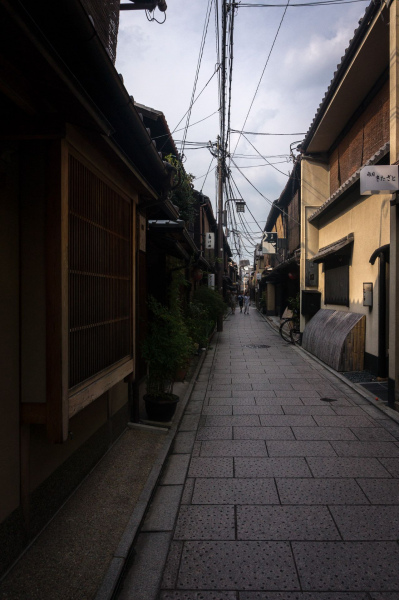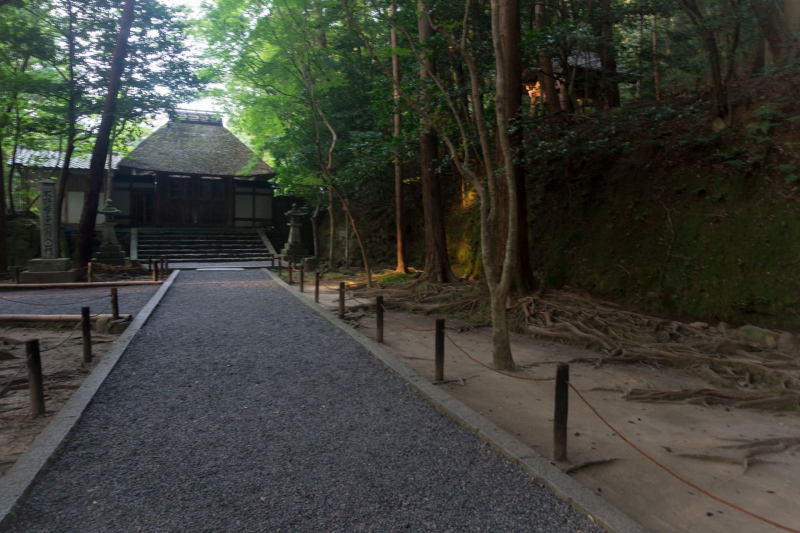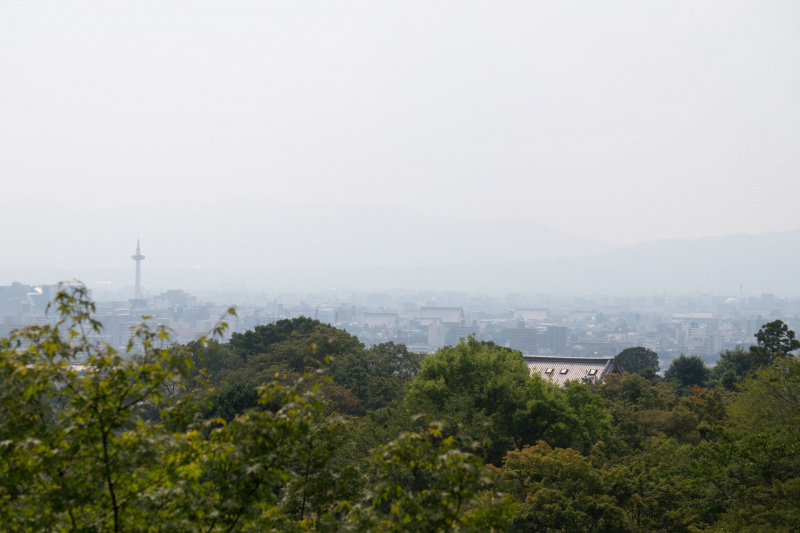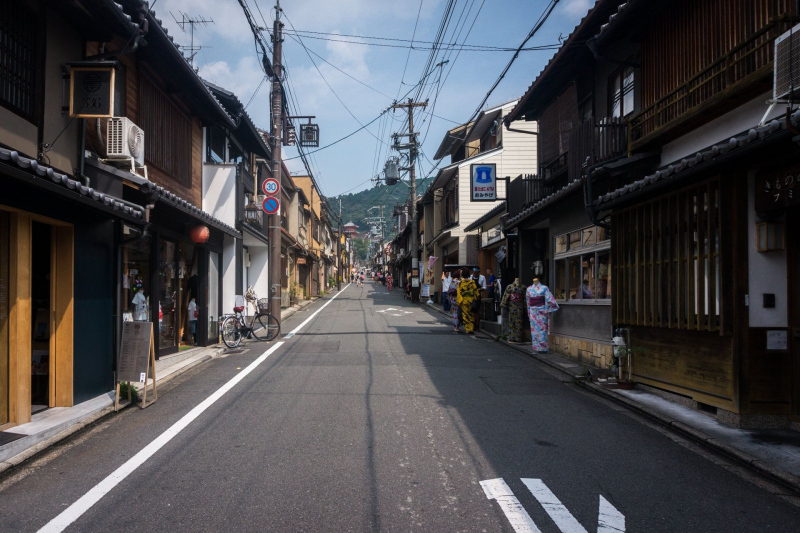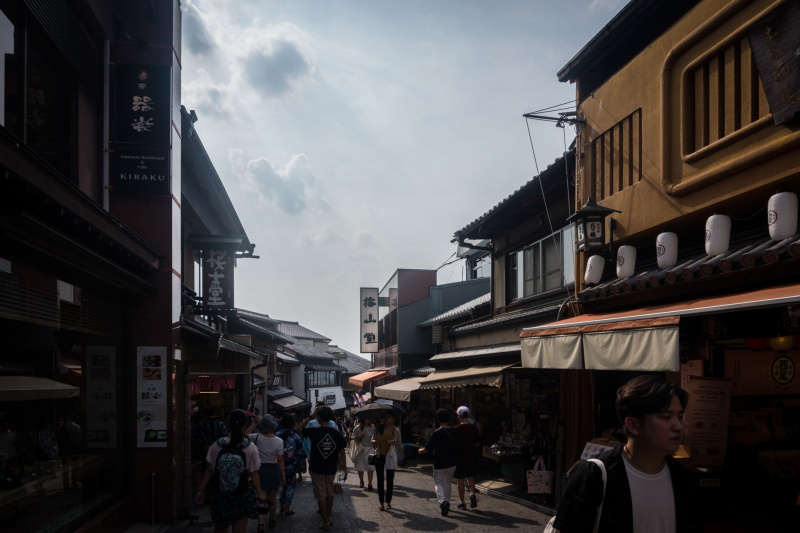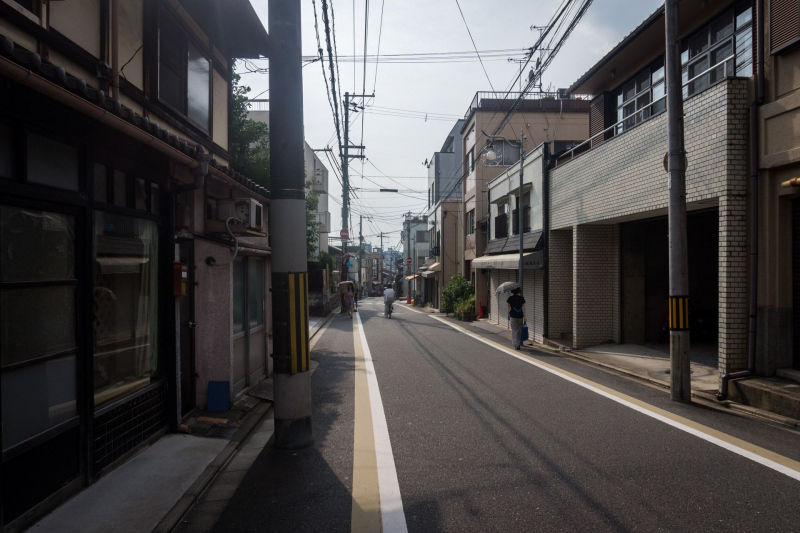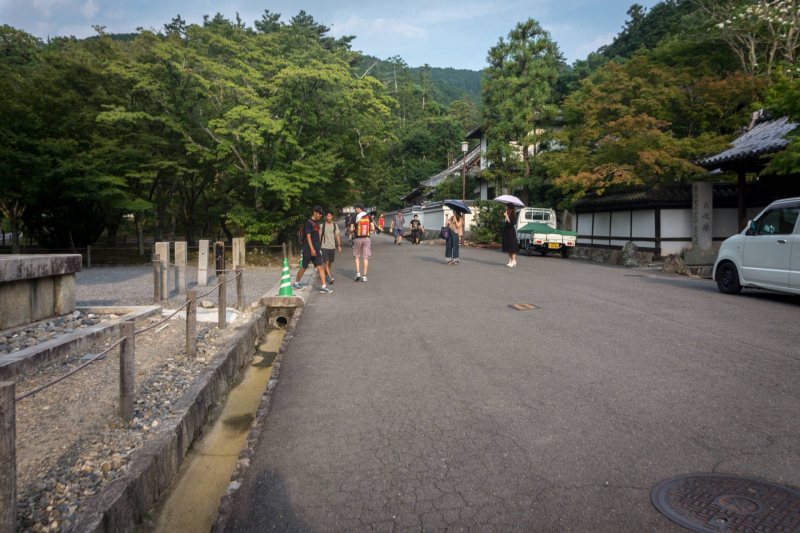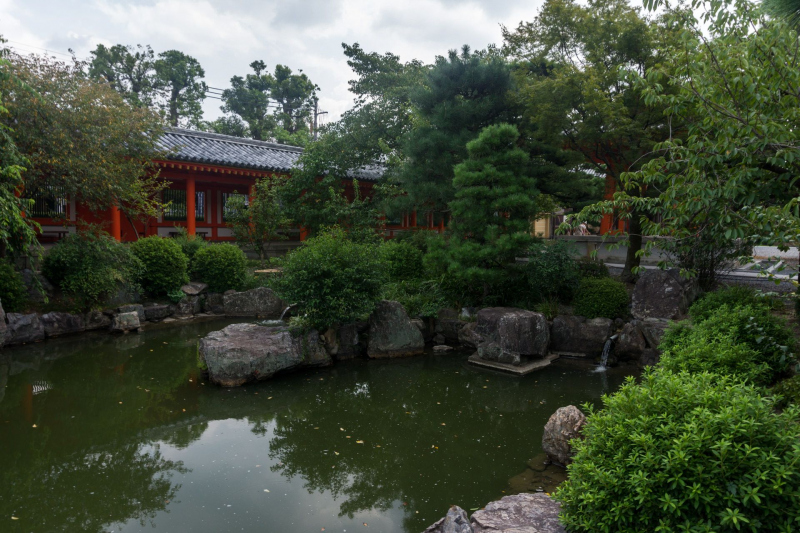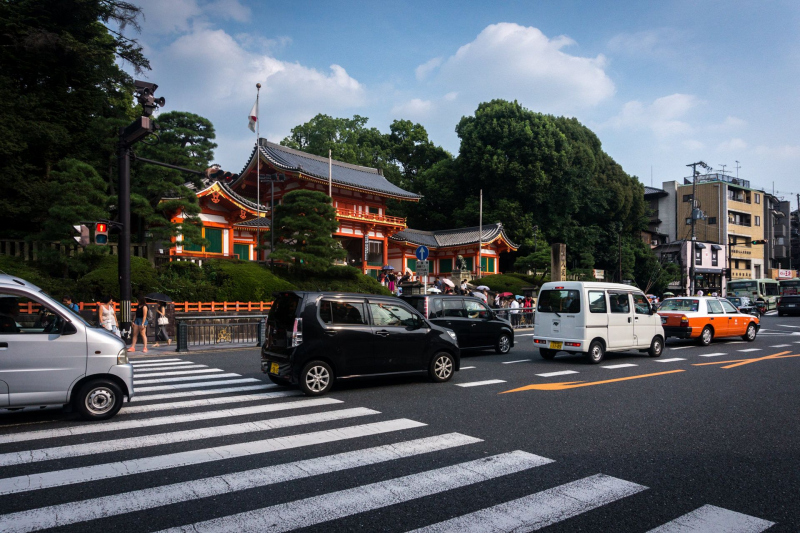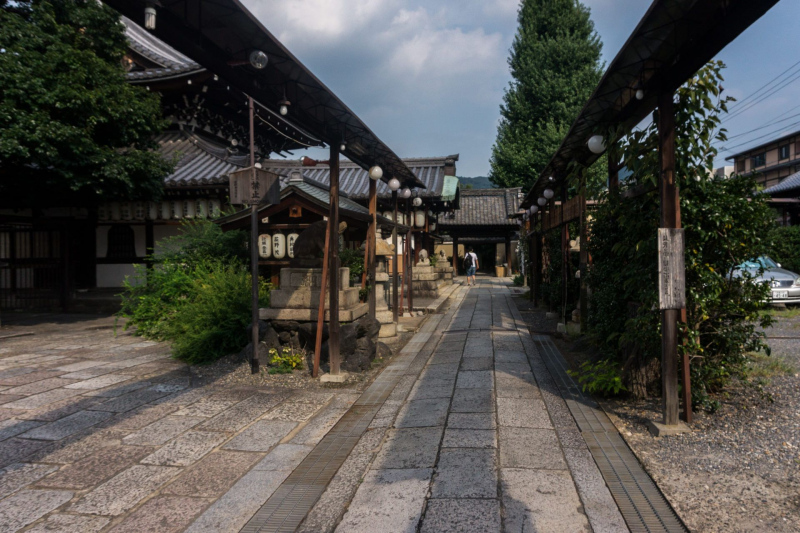The fourth day of our trip took us to Kyōto. The former imperial capital and residence was the country’s capital until 1868, when it was decided – also under pressure from the Europeans, who had discovered the country shortly before and were now trying with all their might to determine the country’s market for themselves – to move to the port city of Tokyo. Shortly before, the English discovered China for themselves and put the country on opium without further ado; after the fall of the Chinese empire, the Japanese simply had no other choice. So they opened up and had to endure all kinds of usurious tariffs, but basically it paid off very quickly. Japan became a world power in a very short time. Even if the Reichsbürger in this country won’t like it, Germany has a constitution and Japan, interestingly enough, has the same one.
I loved my history class taught in French. At last there was no World War as a topic, but the history of China and Japan in the 19th and 20th centuries. So far, we’ve covered the more recent eras of this city, but what’s missing are the older eras. Kyōto offers a very large number of temples and shrines. To see all the interesting ones, you would have to spend at least two or more days here, but we didn’t have time. Physically reasonably fit, we decided to do two of the routes recommended in numerous city guides in one day. More than 20 km at almost 40°C, you can’ t treat yourself any better than that.
Since I can’t reproduce every route with the best will in the world, I use a Google Maps function to describe the course of the day reasonably accurately. This function is the Timeline, which you can use to track your routes on your own mobile phone. Thank goodness the whole thing is sometimes not particularly accurate, otherwise you would really have to worry about what Google knows about you. In this case it is a useful feature, but on other occasions it should be assessed differently.
From the main station in Kyōto, we first went to Inari Station, where the Fushimi Inari-Taisha is directly located. This shrine is dedicated to Kami Inari, the god of fertility, rice and foxes, but also of sake, the drink of the gods. The Japanese also know their trade and have been getting drunk since time immemorial. Somehow we are all the same. The Inari Shrine itself is distinguished by its large number of scarlet wooden portals, the so-called torii, which adorn the paths along the slope. The grounds are quite extensive, but also situated in the middle of a forest, so you can stay here longer even on very hot days. However, since the shrine is very popular, you have to expect larger crowds.
Back at the main station, we then began the actual walk through the old town of Kyōto, where most of the temples and shrines are located. The first destination on this route was the Buddhist temple Sanjūsangen-dō. This is distinguished above all by the contents of its 125-metre-long main hall. In 10 rows of 50 figures each, on either side of the seated Bodhisattva Kannon, stand a total of 1000 hand-carved Kannon statues made of cypress wood, which are supposed to symbolise soldiers of compassion. The whole thing is simply overwhelming, which is why you really need quite a long time to get out of your amazement. Although a Buddhist shrine, countless Buddhist monks were seen taking selfies with the statues. I can understand it in any case, but of course we didn’t use our mobile phones.
The journey continues in the direction of the Kiyomizu-dera temple, but before that we unknowingly turned off into the Otani Mausoleum. This happens to tourists all the time, so there were flyers explaining that we were at the Otani Mausoleum and that we were at a dead end. However, the Otani Mausoleum is also well worth a look. Parallel to this, we then had to climb the mountain to Kiyomizu-dera. Once at the top, one has an impressive view of the city and the elevated main hall. Meanwhile, on the grounds, young Japanese are looking for their love luck between the two love stones. In general, luck is very popular among the Japanese, and you can buy horoscopes and lucky charms everywhere, or you can stick to the rituals and you’ll be lucky with your studies.
Fortunately, the way led us downhill, but it took us some time to reach the Hanamachi district of Gion. This is famous for its exclusive teahouses and restaurants where geishas perform. Geishas are persons of the arts and entertainers in the truest sense. They rely on the old Japanese traditions and entertain their guests as best they can. However, the whole thing is not exactly cheap, which contrasts precisely with the misconception (geisha = prostitute).
Through Maruyama Park we reached the Chion-in Sanmon. However, we only looked at it from the outside. Passing the Chion-in and Ryoshoin, we made our way towards the Nanzen-ji temple. This temple is famous for its gardens and is simply beautiful. The main gate of the temple is particularly impressive and somewhat reminiscent of a wooden triumphal arch.
By now it was already late and it was slowly getting cooler. Our last destination was the Ginkaku-ji temple, on the way to which was the Honen-in temple. We walked along the Philosophers’ Path for a few kilometres until we reached the temple. While we were able to take a look at the exterior of Honen-in, we were clearly too late at Ginkaku-ji. Slightly exhausted, we made our way to the imperial palace, which we reached after a bus ride. Here we strolled through the park, looked at the palace from the outside and finally took the metro back to the main station. Around half past eight, we reached the hotel in Osaka again.
What is your opinion about Kyōto? Just write it in the comment field below the report or visit our social media channels:
Click here for the next report of the Titanic Max Tour










